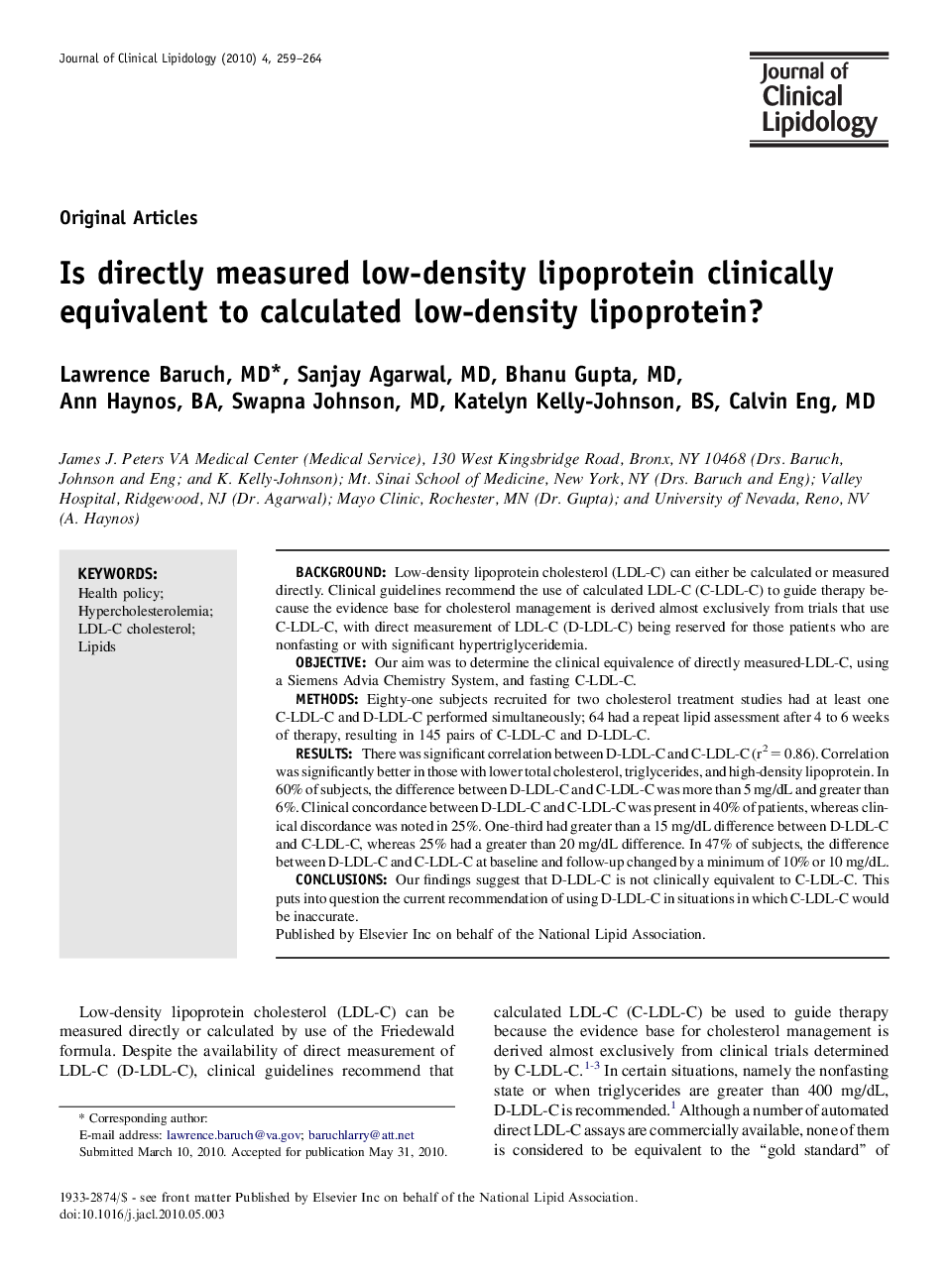| Article ID | Journal | Published Year | Pages | File Type |
|---|---|---|---|---|
| 2967021 | Journal of Clinical Lipidology | 2010 | 6 Pages |
BackgroundLow-density lipoprotein cholesterol (LDL-C) can either be calculated or measured directly. Clinical guidelines recommend the use of calculated LDL-C (C-LDL-C) to guide therapy because the evidence base for cholesterol management is derived almost exclusively from trials that use C-LDL-C, with direct measurement of LDL-C (D-LDL-C) being reserved for those patients who are nonfasting or with significant hypertriglyceridemia.ObjectiveOur aim was to determine the clinical equivalence of directly measured-LDL-C, using a Siemens Advia Chemistry System, and fasting C-LDL-C.MethodsEighty-one subjects recruited for two cholesterol treatment studies had at least one C-LDL-C and D-LDL-C performed simultaneously; 64 had a repeat lipid assessment after 4 to 6 weeks of therapy, resulting in 145 pairs of C-LDL-C and D-LDL-C.ResultsThere was significant correlation between D-LDL-C and C-LDL-C (r2 = 0.86). Correlation was significantly better in those with lower total cholesterol, triglycerides, and high-density lipoprotein. In 60% of subjects, the difference between D-LDL-C and C-LDL-C was more than 5 mg/dL and greater than 6%. Clinical concordance between D-LDL-C and C-LDL-C was present in 40% of patients, whereas clinical discordance was noted in 25%. One-third had greater than a 15 mg/dL difference between D-LDL-C and C-LDL-C, whereas 25% had a greater than 20 mg/dL difference. In 47% of subjects, the difference between D-LDL-C and C-LDL-C at baseline and follow-up changed by a minimum of 10% or 10 mg/dL.ConclusionsOur findings suggest that D-LDL-C is not clinically equivalent to C-LDL-C. This puts into question the current recommendation of using D-LDL-C in situations in which C-LDL-C would be inaccurate.
